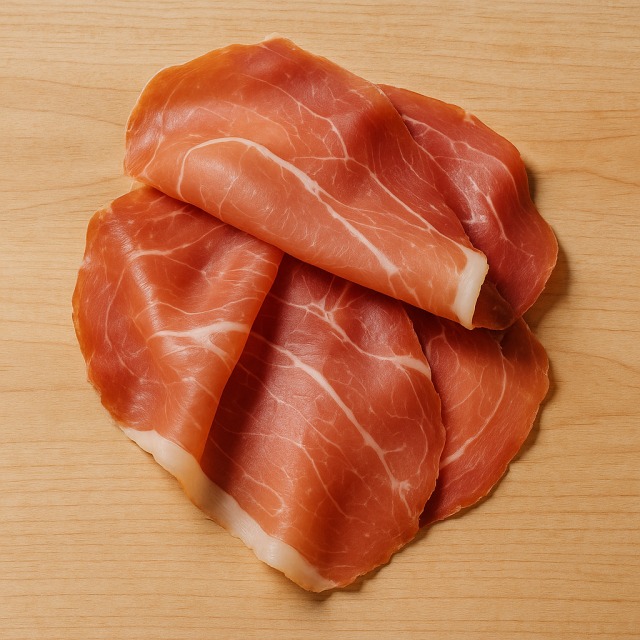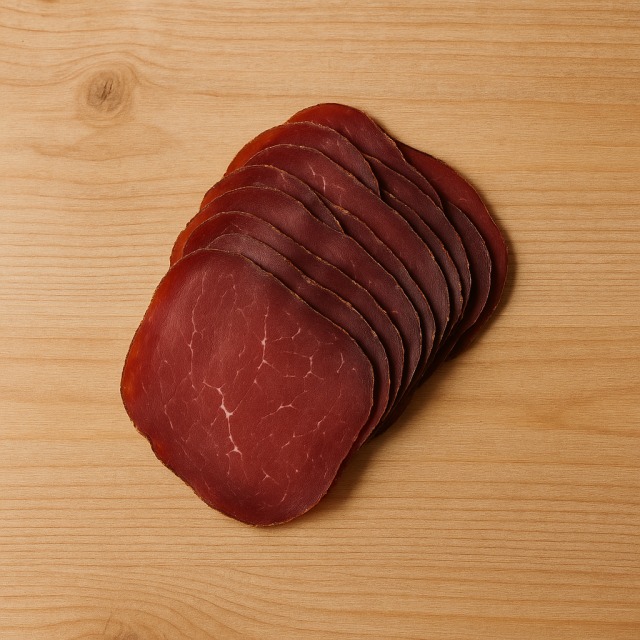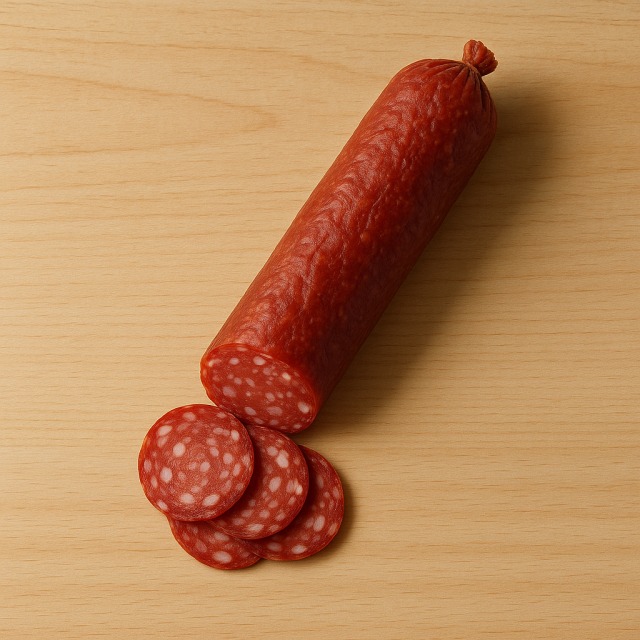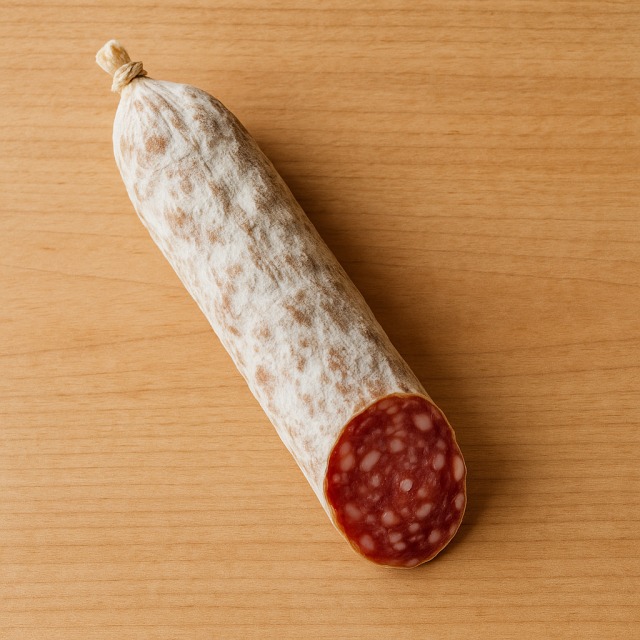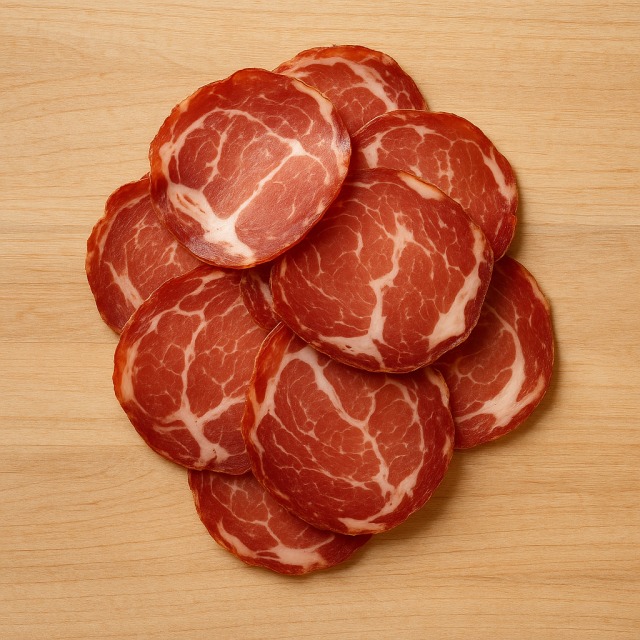Calorie Chart / Meat & Eggs / Chorizo
How Many Calories Are in Chorizo?
Calculation of the nutritional value & Recommended Dietary Intake of chorizo
For g and a calorie requirement of kcal
| Calories 200 kcal | Proteins 8 g | Lipids 18 g | Carbohydrates 1.4 g |
| 10% | 11% | 27% | 1% |
Health benefits of chorizo
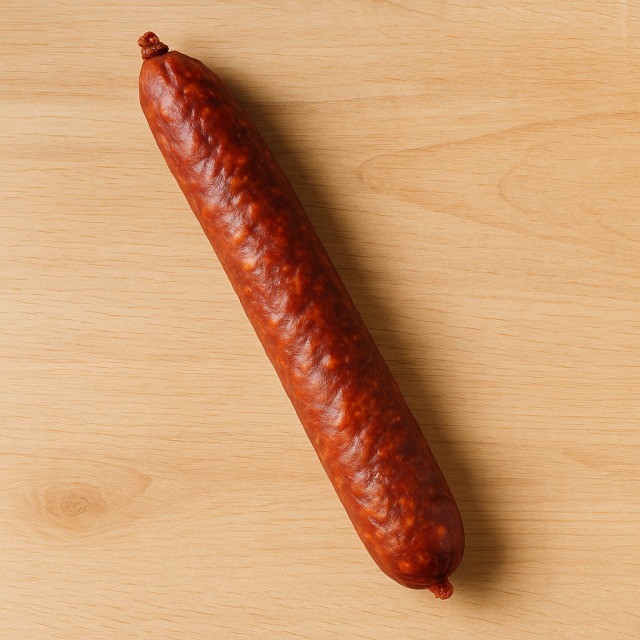
Chorizo - 100g
Calories 499 kcal
Proteins 20 g
Lipids 45 g
Carbohydrates 3.5 g
Chorizo is a cured pork sausage seasoned with garlic and smoked paprika. Because of its 45 g of fat per 100 g, it is considered a high-calorie food; anyone researching "chorizo calories" should know that a small portion already represents a significant share of daily calories. Despite this dense calorie profile, the sausage supplies about 20 g of protein, which can support satiety and muscle repair.
Under its spicy casing, chorizo provides notable amounts of vitamin B3 (niacin) and vitamin B12, both involved in energy metabolism—the very pathways that determine how the body deals with calories. Iron, zinc, and selenium are also present, contributing respectively to oxygen transport, immunity, and antioxidant defense. The red color is due to paprika rich in capsaicin; this compound is supposed to stimulate thermogenesis, potentially helping the body burn more calories, although the effect remains modest and "supposed" rather than firmly proven.
Historically, chorizo emerged in the 16th century after paprika arrived in Spain from the New World, which not only colored the sausage but also acted as a preservative—an early strategy to keep nutrients and calories available for longer journeys. Compared with other cured meats such as salami or dry sausage, chorizo offers a distinctive smoky aroma and a slightly higher calories-to-protein ratio, making portion control essential.
Its pronounced flavor means that a small slice can perfume a whole dish; leveraging that intensity is a practical way to enjoy the taste while moderating calories. Remember, the same grams of chorizo deliver more calories than lean choices like turkey cutlet, so awareness is key for weight management or athletic diets.
Tips for incorporating chorizo into a balanced diet
Because chorizo is rich in calories, the smartest strategy is to use it as a seasoning rather than a main protein. Dice 20 to 30 g and sauté it with vegetables such as bell pepper, zucchini, and tomato; the rendered fat flavors the whole pan, letting you keep overall calories in check. Finish with cooked chickpeas for extra fiber and plant protein.
For a balanced one-pot meal, try a lighter "paella express": combine brown rice, seafood like shrimp and prawn, and just a few thin slices of chorizo. You will still satisfy the "paella calories" craving while adding complex carbs and lean protein that dilute the dish's total calories.
Another idea is a Spanish-style "tortilla": whisk eggs with diced vegetables, add a minimal amount of chopped chorizo, and bake. Compared with classic fried potatoes or French fries, this omelet delivers fewer frying calories and more micronutrients.
If you crave pasta, stir a tablespoon of chorizo crumbs into a whole-grain pasta sauce instead of full-fat carbonara sauce. You cut saturated fat and overall calories yet keep a smoky note. Whatever recipe you choose, weigh your portion: 15 g supplies roughly a tablespoon of intense flavor but only one-third of the calories found in a full 50 g slice.
Frequently Asked Questions
- How many calories are in chorizo?
- There are 499 kcal per 100 g.
- Is chorizo keto-friendly?
- Yes, its low 3.5 g of carbohydrates and high fat content suit ketogenic targets, but watch calories because the fat quickly raises total daily calories.
- Can chorizo help with muscle gain?
- The 20 g of protein per 100 g supports muscle repair, yet athletes often prefer leaner options like chicken breast to obtain protein without excess calories and sodium.
- How can I reduce calories when cooking with chorizo?
- Use it as a flavoring: fry 10–15 g first, discard half the rendered fat, then add low-calorie foods such as broccoli or spinach. You keep the taste while slashing calories.
- Is chorizo considered processed meat?
- Yes. Like cured ham, it is salted, fermented, and sometimes smoked, which classifies it as processed; moderation is advised despite its attractive calories-per-bite ratio.
- What vitamins and minerals does chorizo provide?
- Primarily B3, B6, B12, iron, zinc, and selenium. These nutrients assist energy metabolism, oxygen transport, and antioxidant defenses, but come packaged with high calories and sodium.
Similar foods
Information provided by Calorie Menu may contain inaccuracies or errors. It cannot, under any circumstances, substitute medical advice or medication.
